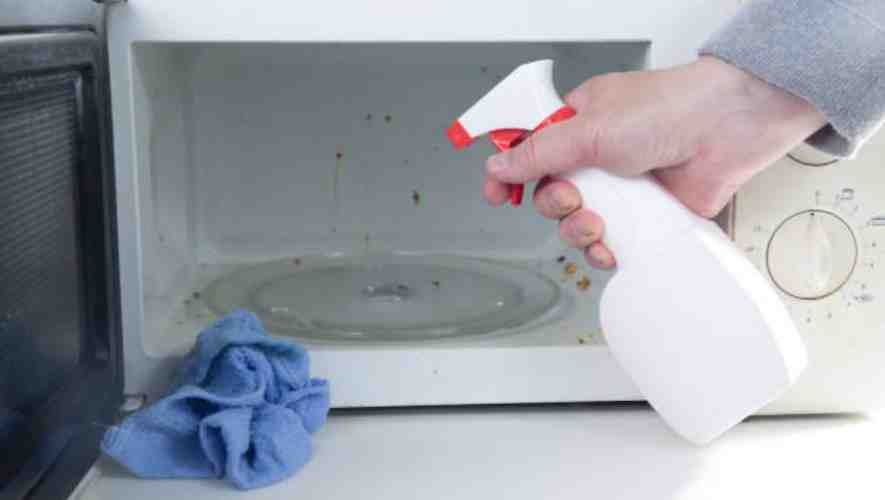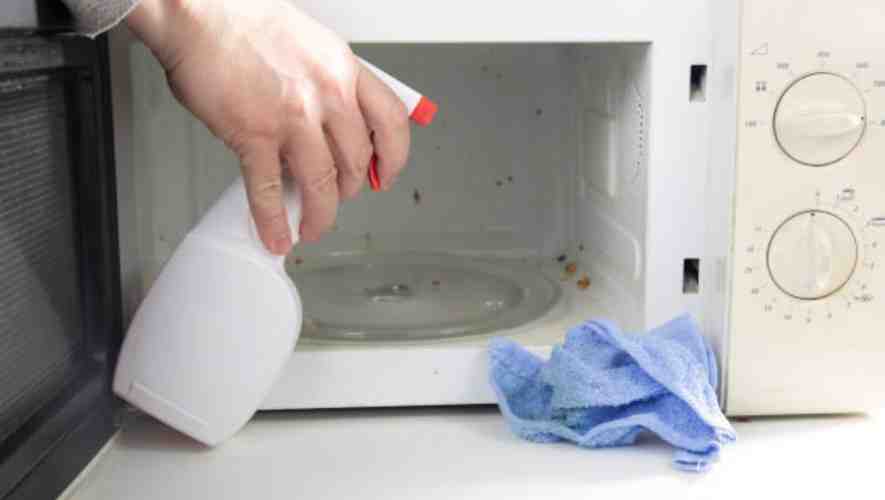Discovering ants in your microwave can definitely throw a wrench in your daily kitchen routine. But don’t worry—getting rid of these tiny intruders is simpler than you might think and doesn’t require giving them any room or food. First things first, understanding why they might have chosen your microwave is key. It’s often the warmth and shelter it provides. To tackle this issue, using safe methods is crucial to avoid any damage to your electrical kitchen buddy.
How to get rid of Ants in Microwave Oven ? To remove ants from a microwave, thoroughly clean the interior with a mixture of water and vinegar. Ensure all food residues are wiped out, and keep the microwave door closed when not in use. Additionally, place ant baits near the microwave to deter further infestation.
Also, consider using ant bait near, but not inside, the microwave to lure them away. Just ensure it’s placed where you don’t cook or prepare food. These simple steps should assist in keeping your microwave ant-free and fully operational for all your cooking needs.
How to Immediately Stop Ants from Surviving in Your Microwave: A Simple Guide

Discovering ants in your microwave can be frustrating. Luckily, there are effective ways to treat your microwave and ensure these little intruders don’t turn your appliance into their new home. Here’s a straightforward guide to keep your microwave ant-free, safely and efficiently.
Understand Your Ant Problem
Before you start any form of treatment, it’s important to understand what you’re dealing with. Are they roaches or ants? Identifying the type of pest can help you choose the right method to tackle them. Note that the size of ants and the toughness of their exoskeleton can influence the effectiveness of different treatments.
Quick Clean Up
First things first, clean your microwave thoroughly. Remove any residue or crumbs that might attract ants into the microwave. Using a simple cleaning solution, wipe the interior of the microwave. Make sure to clean the vents and under the glass plate where food particles can accumulate and attract pests.
DIY Ant Remedies
You can create a simple DIY ant repellent using ingredients like sugar and gel. Mix a small amount of sugar with gel to create a sticky bait. Place this bait near the microwave on a piece of cardboard, but not inside it, as we want to keep the inside food-free and clean. This method can help to lure ants away from the microwave and trap them.
Use a Mini Mister
Another effective tool is a mini mister filled with a liquid repellent. This allows you to apply a fine mist around the microwave, targeting places where ants enter but keeping it safe and free from excessive moisture. Please ensure that the solution is safe to use around kitchen appliances and won’t harm the microwave’s electrical components.
Safely Treat the Microwave
To safely treat the microwave, use heat. Heating a cup of water inside the microwave until it steams up can help kill ants inside due to the high temperature. This method is quick and avoids the use of harsh chemicals where you cook your food.
Prevent Future Infestations
Prevention is key. Make sure to seal any gaps or openings around the microwave that could allow ants to enter. Regular cleaning and monitoring will ensure that your microwave remains free from ants. Understanding the behaviors that relate to how ants survive can also prevent them from returning.
By following these steps, you can keep your microwave clean, safe, and free from unwanted guests. Remember, the goal is to remove ants and ensure they don’t come back, not just to kill them on sight.
Got Ants in Your Microwave? Here’s How to Treat It and Make Sure They Don’t Come Back

Finding ants in your microwave can be a real nuisance, but don’t worry—there are simple and effective ways to handle this situation and ensure they don’t return. Here’s a straightforward, easy-to-follow guide on how to treat your microwave for ants and some tips to prevent future invasions.
If you’ve noticed ants coming into your microwave, it’s essential to address the source of the problem. Often, ants are attracted to warm places and the slightest trace of food residue. Start by giving your microwave a thorough clean. Mix a solution of vinegar and water and wipe down the inside of your microwave, including the turntable or plate, and make sure to reach into the corners and seams where food particles can accumulate.
After cleaning, it’s time to treat the area to deter ants. A common household bug deterrent is using a powder like diatomaceous earth, which is safe and effective. Sprinkle this powder around the microwave’s base and any entry points, which will help keep not just ants but any insect or cockroach from making their way into your appliance.
For an immediate and sensitive solution, consider making a homemade repellent. Mix equal parts of vinegar and water in a spray bottle, adding a few drops of essential oil like peppermint or eucalyptus for added effectiveness. Spray this mixture around the microwave, focusing on gaps where ants could enter but avoid spraying directly into the microwave’s vents to protect its electrical components.
Implementing these pest control measures can significantly reduce the likelihood of ants returning. Remember, it’s not just about a one-time clean-up; regular maintenance is crucial. Wipe down the microwave after use and keep the surrounding area clean and free of food debris.
Lastly, always ensure that any containers or dishes in the microwave are sealed properly to avoid attracting bugs with the scent of leftovers. Using these tips and maintaining cleanliness will effectively keep your microwave ant-free and in good working condition.
Conclusion
As you tackle the challenge of keeping your microwave ant-free, remember that this appliance is about more than just reheating leftovers. From quick recipes to clever kitchen hacks, your microwave uses wavelengths of energy to cook food efficiently, enhancing your overall cooking experience. For example, understanding the ratio of surface area to volume in your dishes can help you optimize cooking times and outcomes.
Moreover, when dealing with pests, consider the factors that contribute to their presence, like warmth and food residues. Keeping the interior and outer shell of your microwave dry and clean is absolutely crucial. Metals in the microwave, like the turntable, can also attract pests if not wiped down after spills.
So, stick to a routine of cleanliness and maintenance, and you won’t find yourself running around trying to solve ant problems. Your microwave is a powerful tool in your kitchen—keep it clean, and it will serve you well, not just as a cooking device but as a testament to your smart kitchen management.
Frequently Asked Questions (How to get rid of Ants in Microwave Oven)
What happens if ants get in a microwave?
When ants enter a microwave and it’s turned on, the microwave radiation heats the water molecules inside the ants, potentially killing them due to the high temperatures. However, ants can sometimes survive by finding cooler spots or by being too small to absorb much radiation.
How do I get rid of ants in my oven?
To get rid of ants in your oven, first, ensure it’s cool and turned off. Remove any food particles by cleaning thoroughly. Use a natural repellent like vinegar or lemon juice to wipe surfaces. Finally, place ant baits near the oven to eliminate them at the source.
How do I get rid of bugs in my microwave?
To get rid of bugs in your microwave, clean it thoroughly with a mix of water and vinegar, heat a bowl of this solution for 5 minutes to steam, then wipe down. Ensure the microwave is unplugged and cool before cleaning. Seal openings to prevent future infestations.
What is the fastest way to get rid of ants in the kitchen?
The fastest way to eliminate ants in the kitchen is by using a combination of vinegar and water solution for cleaning surfaces, placing ant baits near entry points, and sealing entry points to prevent more ants from entering.

